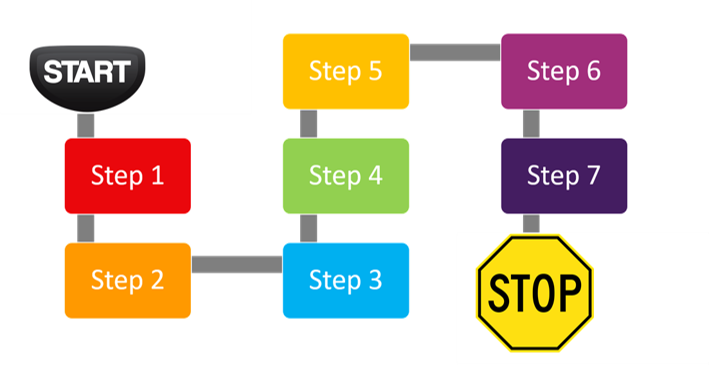
As the old saying goes a picture is worth a thousand words and a video probably worth a million.
Most of us are surrounded by processes almost on a daily basis, be it the trip to the grocery store, a visit to the doctor or the stroll to your favourite coffee shop.
Each interaction can be viewed through the lens of a system, consisting of a combination of people, technology and tasks to deliver an outcome of some form be it a product, service or a result.
The story of a process refers to the primary objectives behind how a process is developed, executed, and improved over time. The story of a process helps to provide context and understanding about why the process exists, what it is designed to achieve, and how it has evolved to meet the needs of the organization.
In developing the story of a process a number of tools can be used to visualize how the process functions, these include flowcharts, process maps, mind maps value stream maps etc.
A story of a process typically includes the following elements:
Background: The Why aspect of the process, the background of the process provides context about why it was created in the first place. It may describe the problem that the process was designed to solve, the goals it was created to achieve, and the business environment at the time.
Development: This section describes the process of developing the process. It may include details about who was involved in the process, how long it took, and what challenges were encountered along the way.
Implementation: This section describes how the process was implemented and any changes that were made during the implementation phase.
Continuous Improvement: The story of a process should include information about how the process has been improved over time. This could include changes made in response to feedback, updates to technology or systems, and improvements in efficiency or effectiveness.
Results: Finally, the story of a process should include information about the results achieved as a result of the process. This could include metrics or KPIs that demonstrate the success of the process, as well as any other relevant information that helps to tell the story.
Any organization embarking on a continuous improvement initiative on critical business projects should begin by investing time in understanding the story of the process which can then be used as a basis for refining and optimizing the process through the use of a variety of business optimization tools and techniques.
